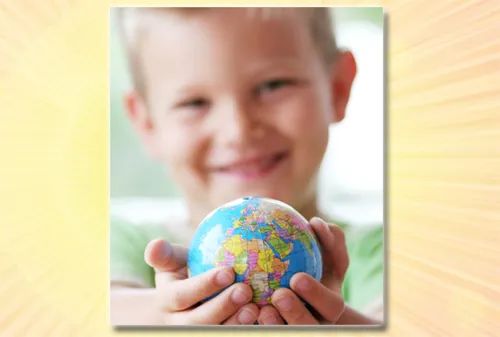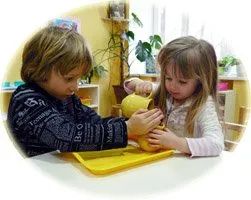5 Practices to Promote Peace
I’d like to start today by sharing a haiku written by Jenny Formon, Lead Primary I Teacher at Charlotte Montessori. Jenny asked her class what peace means to them. She was so impressed by the thoughtfulness of the answers that she was inspired to create this fantastic poem about peace:
PEACE
By Jenny Formon and Primary I
What we think PEACE is…
To be patient and gentle.
To not interrupt.
Kindness to others,
To people who are different,
To our families.
It is peaceful songs,
Quiet listening to books
And bedtime stories.
Something for others,
Asking what others would like.
Quiet. Nice. Polite.
Peace education is an important part of the Montessori Method. Dr. Maria Montessori saw hope for “a higher form of civilization” through early childhood education. As she said in Education and Peace:
 "An education capable of saving humanity is no small undertaking...."
"An education capable of saving humanity is no small undertaking...."

“An education capable of saving humanity is no small undertaking; it involves the spiritual development of man, the enhancement of his value as an individual, and the preparation of young people to understand the times in which they live.”
Peace education is also a fundamental part of the (authentic) Montessori classroom. These lessons can also be helpful and effective outside the classroom. Here are 5 practices for promoting peace at home:
1.) Be a good role model! This is very important. Children are watching and learning from every single thing you say or do. Be mindful of the example you’re setting. Don’t rant about your cranky co-worker, or gossip about the nettling neighbor. Refrain from arguing with your spouse (or anyone else for that matter) in front of the children. Show compassion, forgiveness, and understanding when talking to or about other people. In short: talk kind, think kind, and be kind!
 Peace can be as simple as a quiet moment
Peace can be as simple as a quiet moment

2.) Define peace with your children. Talk about what peace means to you and ask for their thoughts. The idea of peace can mean different things to different people. Peace can be as simple as a quiet moment, or as monumental as a world that’s free of conflict. Talk about it, share your ideas, and be open to really hearing your child’s opinion. You may be surprised by what your child can teach you.
3.) Practice conflict resolution skills. In Montessori classrooms, one effective conflict resolution technique is the use of a special peace object (some use a peace pole for this purpose, but it can really be any pre-designated object) which is used in times of conflict. Children involved in the conflict sit in a circle, facing one another. Whoever is holding the peace object gets to speak. Everyone else listens respectfully and without interruption. Then the object is passed to the next person and it is his/her turn to speak. Another technique often used in Montessori schools is a peace corner, table, or area where children go to find ‘calm.” Things like bottles of scented oils, visually-calming pictures of nature, and quieting items such as sand timers, seashells or kaleidoscopes are kept in this spot. Children choose to go to the peace area on their own (not like a time-out) when they are seeking a moment of serenity.
 Activities like watering plants... teach love and respect for others.
Activities like watering plants... teach love and respect for others.
4.) Encourage your children to help care for their environment. This teaches respect and love toward others. Activities like watering plants, feeding pets, filling bird feeders, and gardening encourage children to interact with their environment and teach love and respect for others.
5.) Read. Not only is the act of reading peaceful in and of itself, but many books also do a great job of teaching concepts of peace. (Here is a link to some great books for children about peace.) Whenever reading books about other cultures or customs, demonstrate respect by keeping your tone and words positive. It probably goes without saying, but be sure to choose quiet books when you’re trying to promote peace. There are a great many super-fun, lively books out there, so this is just a reminder to have a few of those bedtime books on hand. Reading together also has the bonus of encouraging your child’s love of learning, as well as providing some quality snuggle opportunities.
Want more peace? Check out this powerful presentation brought to you free by Age of Montessori:
Presented by Mary Ellen Maunz and Randall Klein

This webinar is based on Maria Montessori’s intriguing teaching on learning to see the child who is not yet there. How can we overcome our hot button reactions to our children, learn to observe them more carefully and nurture the concentration that is at the heart of every peaceful child.





















